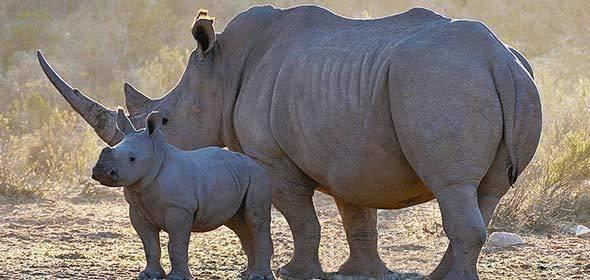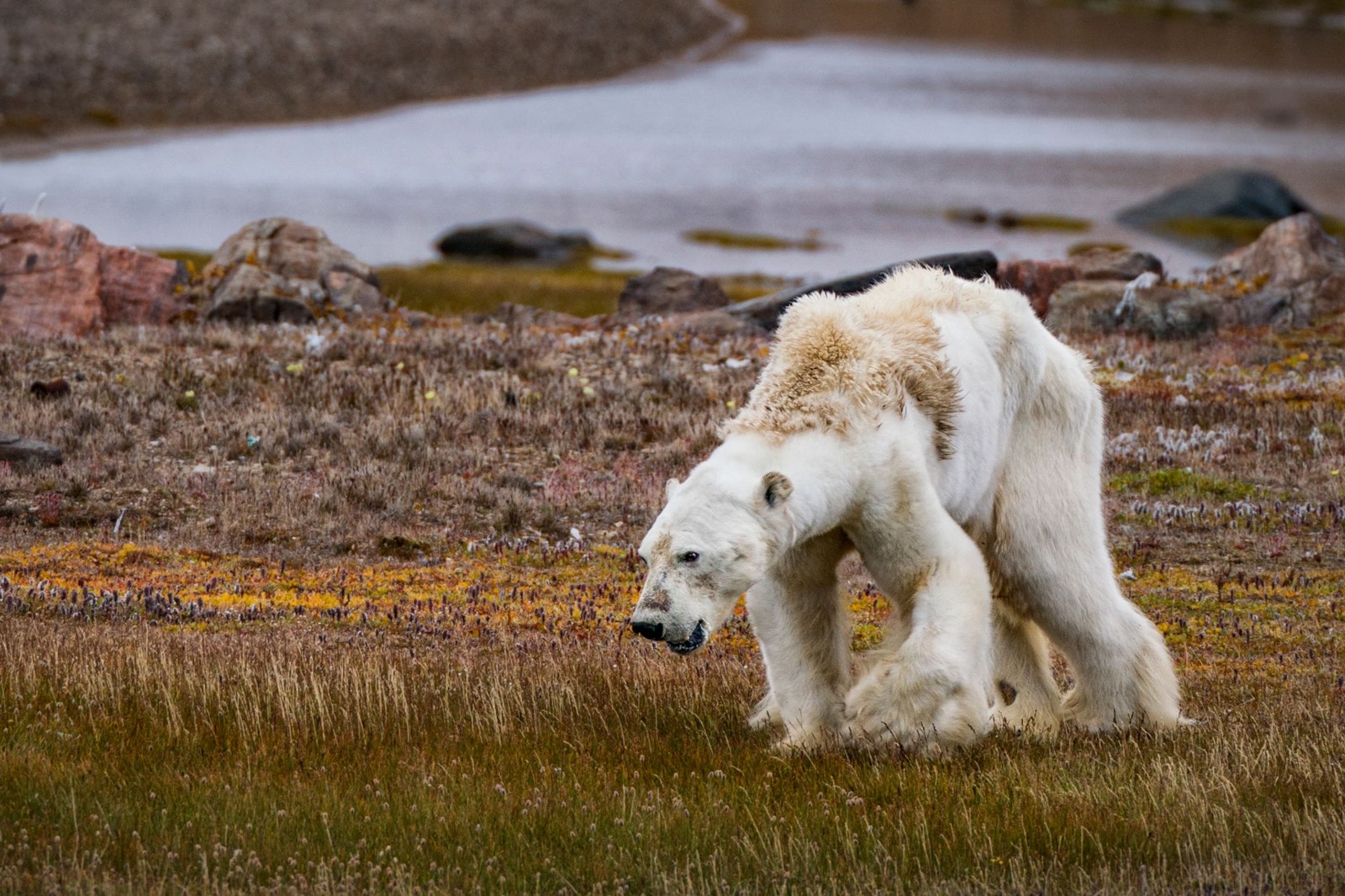
Kruger National Park Poaching Concerns: Poaching incidents in South Africa’s Kruger National Park increased to 88 rhinos in the past year, up from 78 the previous year, indicating ongoing challenges
Rhino poaching in Kruger National Park has surged, with incidents rising from 78 to 88 in the past year, signaling a growing crisis. Driven by international demand for rhino horn, poverty in surrounding communities, and sophisticated poaching syndicates, the battle to protect these endangered creatures is intensifying. Despite anti-poaching efforts, the park faces significant challenges in curbing poaching and preserving biodiversity, threatening both the species and local economies.
🐶 Pet Star
59 min read · 28, Mar 2025

Kruger National Park Poaching Concerns: An Ongoing Battle Against Rhino Poaching in South Africa
Introduction
South Africa's Kruger National Park (KNP) is one of the most renowned and iconic wildlife reserves in the world. Spanning over 19,000 square kilometers, it is home to a diverse range of wildlife species, including the "Big Five" – elephants, lions, leopards, buffalo, and rhinos. The park is not only a vital sanctuary for animals but also a major tourist attraction, drawing millions of visitors annually. However, despite its international recognition, the park has faced persistent challenges in preserving its wildlife, particularly in relation to poaching.
In recent years, poaching incidents have been on the rise, with the rhino population being particularly vulnerable. The statistics for rhino poaching in Kruger National Park indicate a worrying trend. Poaching incidents increased to 88 rhinos in the past year, up from 78 the previous year. This surge highlights the ongoing threat to the survival of rhinos in one of the world's most famous conservation areas.
This article delves into the challenges posed by rhino poaching in Kruger National Park, the factors contributing to the problem, the efforts made to combat it, and the implications for wildlife conservation in South Africa.
The Poaching Crisis in Kruger National Park
Kruger National Park has long been a battleground in the war against wildlife poaching. The park's rhino population, particularly the white rhino and black rhino species, has been decimated over the past few decades due to illegal poaching activities. Poaching is primarily driven by the high demand for rhino horn, which is prized in some Asian countries for its perceived medicinal properties and as a status symbol. Rhino horns are sold on the black market for exorbitant prices, making them a highly lucrative target for poachers.
Despite substantial efforts to curb poaching, the figures remain alarming. The increase from 78 rhinos poached in the previous year to 88 in the last year signifies that poaching is not only persisting but also becoming more entrenched. This increase has raised significant concerns among conservationists, park authorities, and the global community about the sustainability of rhino populations in Kruger National Park and across South Africa.
Factors Contributing to Poaching in Kruger National Park
Several factors contribute to the persistence of poaching in Kruger National Park. These factors range from socio-economic issues in surrounding communities to the high demand for rhino horn. Below are some of the primary contributors:
1. Demand for Rhino Horn
The primary driver of rhino poaching is the demand for rhino horn, particularly in countries like Vietnam, China, and other parts of Southeast Asia. Rhino horn is falsely believed to have medicinal properties, with claims that it can cure ailments such as cancer, fever, and hangovers. Despite the lack of scientific evidence supporting these claims, the demand for rhino horn remains high.
In addition to its supposed medicinal properties, rhino horn is also valued as a symbol of wealth and status. In some cultures, possessing rhino horn is seen as a sign of prosperity. As long as this demand continues to fuel the illegal trade, poaching will remain a threat to rhinos in Kruger National Park.
2. Poverty in Surrounding Communities
Many of the poachers who enter Kruger National Park come from impoverished communities surrounding the park. In these areas, poverty and unemployment are prevalent, making poaching a tempting option for those seeking quick financial gain. Poaching syndicates often recruit individuals from these communities, offering them significant sums of money in exchange for their participation in illegal activities.
Additionally, some local people view poaching as a means of survival, especially if they lack access to education and employment opportunities. This socio-economic issue is one of the key factors that perpetuate poaching in Kruger National Park and other protected areas in South Africa.
3. Organized Crime Syndicates
Rhino poaching is no longer a crime committed by individuals acting alone; it is increasingly perpetrated by sophisticated, organized crime syndicates. These syndicates are involved in the poaching, trafficking, and illegal sale of rhino horns. They operate across international borders, making it difficult for law enforcement to track and dismantle their operations.
These syndicates often have well-established networks, utilizing advanced technology, including drones and GPS tracking devices, to locate and poach rhinos. They also have the financial resources to bribe local officials and park rangers, further complicating efforts to combat poaching in Kruger National Park.
4. Increased Access to the Park
Kruger National Park, being one of the largest game reserves in South Africa, is geographically vast and difficult to patrol effectively. While the park has invested in improved anti-poaching technologies, such as aerial surveillance and GPS tracking, the sheer size of the reserve makes it a challenge to prevent poaching activities. Poachers often exploit areas that are less monitored, increasing the likelihood of successful poaching incidents.
Moreover, the park shares a porous border with Mozambique, which has been identified as a major transit route for poached rhino horn. This cross-border challenge adds another layer of complexity to the fight against poaching in Kruger National Park.
Efforts to Combat Rhino Poaching
In response to the escalating poaching crisis, the South African government, along with various conservation organizations, has implemented several measures to combat rhino poaching in Kruger National Park. These measures include:
1. Anti-Poaching Units (APUs)
Kruger National Park has established specialized anti-poaching units (APUs) tasked with monitoring the park and apprehending poachers. These units are equipped with state-of-the-art technology, such as drones, night-vision equipment, and thermal imaging cameras, to detect illegal activities within the park. APUs also conduct regular patrols and work closely with the South African Police Service (SAPS) and other law enforcement agencies to disrupt poaching syndicates.
Despite their efforts, the battle against poaching remains challenging, particularly due to the vast size of the park and the advanced tactics employed by poachers.
2. Collaboration with Mozambique
Given the cross-border nature of rhino poaching, Kruger National Park has collaborated with neighboring Mozambique to curb poaching activities. This collaboration involves sharing intelligence, joint patrols, and coordinated efforts to apprehend poachers and dismantle trafficking networks. While progress has been made, the porous border between the two countries remains a significant obstacle in preventing poaching.
3. Community Engagement and Education
Conservationists and park authorities are increasingly focusing on community engagement and education as a means of addressing the root causes of poaching. By providing alternative livelihood options, such as eco-tourism and job opportunities in wildlife conservation, local communities can be empowered to resist the temptation to engage in poaching.
In addition, education campaigns are being carried out to raise awareness about the importance of rhino conservation and the negative impact of poaching on both wildlife and local communities. These initiatives aim to shift public perception and reduce the demand for rhino horn.
4. Legal and Policy Measures
The South African government has implemented a range of legal and policy measures to address rhino poaching. These include tougher penalties for poaching and trafficking, increased fines, and stricter regulations around the sale of rhino horn. Additionally, South Africa has been at the forefront of international efforts to ban the trade in rhino horn, including lobbying for a ban on rhino horn trade through the Convention on International Trade in Endangered Species (CITES).
Despite these efforts, challenges remain in terms of enforcement and international cooperation, especially in countries where rhino horn demand is high.
The Implications of Poaching for Conservation and Biodiversity
The ongoing poaching crisis in Kruger National Park has significant implications not only for rhinos but for the broader conservation efforts in South Africa. Rhino poaching threatens the survival of both the black and white rhino species, which are already classified as vulnerable or near-threatened by the International Union for Conservation of Nature (IUCN).
The loss of rhinos also has ripple effects throughout the ecosystem. As herbivores, rhinos play a critical role in maintaining the balance of the park's vegetation. Their grazing habits help shape the landscape, which in turn supports a variety of other wildlife species. Without rhinos, the ecosystem could undergo drastic changes, affecting many other animals that rely on the park's unique environment.
Moreover, the continued poaching of rhinos undermines the credibility of South Africa’s conservation efforts and damages the country’s reputation as a leader in wildlife conservation. The economic benefits of tourism, which rely heavily on the presence of wildlife like rhinos, could also be severely impacted if poaching continues unchecked.
The Battle Against Rhino Poaching in Kruger National Park: A Growing Crisis
The issue of rhino poaching in Kruger National Park has reached critical levels, with alarming statistics that underscore the ongoing battle to protect one of South Africa's most iconic and ecologically important reserves. In the past year, 88 rhinos were tragically killed by poachers in Kruger, an increase from 78 the year before, highlighting the persistent and growing threat to these majestic creatures. Poaching in Kruger National Park is driven by a complex mix of factors, ranging from the lucrative demand for rhino horn in international black markets, to local poverty and organized crime syndicates exploiting the situation. Rhino horns, primarily sought for their supposed medicinal properties and as a status symbol, fetch high prices on the black market, making rhinos prime targets for poachers. The international demand, particularly in parts of Asia, continues to drive poaching despite ongoing anti-poaching efforts. The rise in poaching incidents is exacerbated by the socio-economic challenges faced by local communities surrounding Kruger National Park. With high unemployment and limited economic opportunities, some individuals are drawn into poaching activities as a means to earn quick financial rewards. This challenge is compounded by the involvement of sophisticated poaching syndicates that operate across borders, often with the use of advanced technology and well-funded operations. These syndicates are not only capable of evading detection by park rangers but are also able to bribe local authorities, making the fight against poaching even more difficult. Kruger National Park’s vast size and its proximity to Mozambique, a major transit point for illegal rhino horn trafficking, further complicate efforts to curb poaching. Despite the establishment of specialized anti-poaching units, aerial surveillance, and improved intelligence-sharing, poachers continue to exploit gaps in security, infiltrating remote and less-patrolled areas of the park. In response to this crisis, South African authorities and conservation organizations have intensified efforts to protect rhinos, including working closely with Mozambique to combat cross-border poaching, launching educational campaigns to raise awareness about the value of rhinos, and offering alternative livelihoods to communities affected by poaching. However, the increase in poaching incidents highlights the urgent need for a more integrated and sustainable approach to wildlife conservation. Poaching not only threatens the survival of rhinos but also poses a significant threat to the broader ecosystem of Kruger National Park. As rhinos play an essential role in shaping the landscape through their grazing habits, their loss could lead to the destabilization of the park’s delicate ecological balance, affecting countless other species that depend on the park's environment. Furthermore, the economic benefits of tourism, which rely heavily on the presence of wildlife like rhinos, are at risk if poaching continues unabated. In conclusion, the rise in rhino poaching in Kruger National Park represents a multifaceted crisis that requires urgent attention from all stakeholders involved in wildlife conservation. While progress has been made, the fight against poaching remains a significant challenge that demands continued cooperation, investment, and innovative strategies to safeguard rhinos and preserve the biodiversity of this globally renowned conservation area. The survival of the rhino in Kruger National Park will depend on the collective efforts of governments, conservationists, local communities, and the international community.
Kruger National Park: The Intensifying Battle Against Rhino Poaching
The escalating crisis of rhino poaching in South Africa’s Kruger National Park has reached alarming proportions, underscoring the complex and multifaceted challenges faced by conservationists, law enforcement agencies, and local communities in protecting one of the world's most iconic wildlife habitats. Spanning over 19,000 square kilometers, Kruger is not just a sanctuary for an array of species, but also a significant economic driver for South Africa, drawing millions of tourists each year. However, the park’s status as a prime conservation area has made it a major target for poaching syndicates, particularly those hunting rhinos for their horns. The statistics reflect a troubling upward trend, with rhino poaching rising from 78 incidents in the previous year to 88 in the past year, demonstrating that despite significant investments in anti-poaching measures, the crisis remains deeply entrenched. Rhino poaching is primarily driven by the high demand for rhino horn in international black markets, especially in countries like Vietnam and China, where it is mistakenly believed to possess medicinal properties, capable of curing a range of ailments from cancer to fevers, despite no scientific evidence supporting these claims. This erroneous belief, coupled with the horn’s value as a symbol of wealth and status, has created a lucrative trade that incentivizes poaching and fuels the illegal market, with a single rhino horn fetching tens of thousands of dollars on the black market. The continuous demand for rhino horn remains the core motivation behind the ongoing poaching crisis. However, poaching is not merely an issue of demand; it is exacerbated by a host of socio-economic and operational challenges. Many poachers come from nearby communities surrounding Kruger National Park, where high poverty levels and lack of employment opportunities make illegal activities, like poaching, an attractive option for quick financial gain. In impoverished rural areas, the promise of a large cash reward for killing a rhino often outweighs the risks involved, as poaching syndicates exploit these vulnerable communities to fuel their operations. These syndicates have become increasingly sophisticated, often operating like well-organized criminal enterprises with complex networks that stretch across borders, leveraging advanced technology like drones, GPS trackers, and high-powered weapons. They are capable of evading detection by park rangers and even bribing local officials to look the other way, making it much harder for law enforcement to combat this menace effectively. Furthermore, Kruger National Park’s location along the border with Mozambique has made it a key battleground in the fight against rhino poaching. The park shares a porous border with Mozambique, and traffickers use this route to smuggle rhino horn out of South Africa and into international markets. The lack of stringent border controls and the challenges in cooperation between South African and Mozambican authorities have created significant gaps in enforcement. In response to the growing threat, Kruger National Park has significantly increased its efforts to tackle poaching. Anti-poaching units (APUs) are now a central part of the park’s defense strategy. These units, equipped with sophisticated technology, including night vision goggles, thermal imaging cameras, and aerial surveillance drones, patrol the park around the clock. The APUs work closely with the South African Police Service and other law enforcement agencies to identify and apprehend poachers. Despite these advancements, poaching continues to surge. The sheer size of Kruger National Park and its limited number of anti-poaching personnel means that there are still vast areas of the park where poachers can operate with relative impunity. The challenge is compounded by the region’s rugged terrain and dense vegetation, which makes it difficult to track and intercept poaching attempts. Additionally, poachers often target the most remote and less-patrolled areas of the park, further complicating efforts to curb their activities. Beyond the immediate threat to rhinos, the broader ecological and economic consequences of poaching are severe. Rhinos play an integral role in the park’s ecosystem, with their grazing behavior shaping the landscape by preventing certain species of vegetation from becoming overgrown, thus maintaining biodiversity. Their absence would have a profound impact on the park's ecological balance, potentially threatening the survival of other species that rely on the habitat and vegetation maintained by rhinos. Moreover, the economic impact of rhino poaching is significant. South Africa’s wildlife tourism industry, which heavily relies on the presence of rhinos, faces a major risk if poaching continues unchecked. Kruger National Park alone contributes billions of rands to the South African economy annually through tourism, and the loss of rhinos could drive away tourists who visit the park specifically to see these iconic animals. Furthermore, the international reputation of South Africa as a leader in wildlife conservation could be severely damaged by the continued slaughter of rhinos, undermining global efforts to protect endangered species. Efforts to curb poaching have extended beyond just increased law enforcement; they now include cross-border collaboration between South Africa and Mozambique. Joint patrols, intelligence-sharing, and coordinated efforts to target poaching syndicates have been integral in trying to stem the tide of illegal activity in Kruger. Yet, despite these efforts, the porous border remains a significant obstacle in effectively controlling the flow of poached rhino horn. Legal and policy reforms have also been put in place, with tougher sentences for poaching and stricter penalties for individuals involved in the trade of rhino horn. South Africa has been an active proponent of international measures to curb the global trade in rhino horn, including working through the Convention on International Trade in Endangered Species (CITES) to advocate for stronger international cooperation and regulations to prohibit rhino horn trade. These legislative measures are crucial, but enforcement remains a challenge. Community engagement and education are increasingly being recognized as key components in the fight against poaching. Local communities are being educated about the value of rhinos, not only as part of South Africa’s natural heritage but also in terms of their economic value through tourism. By offering alternative livelihoods, such as eco-tourism and employment within the park’s conservation programs, these communities can be provided with opportunities that reduce the allure of poaching. Additionally, these education programs help shift public attitudes toward the importance of preserving rhinos and the broader wildlife ecosystem, ultimately reducing local demand for rhino horn. Despite these efforts, the fight against rhino poaching remains an uphill battle. The increased poaching statistics over the past year demonstrate that progress is slow and that the forces driving the illegal rhino horn trade are deeply entrenched. Effective conservation requires not only continued enforcement of laws but also addressing the root causes of poaching, such as poverty, organized crime, and demand for rhino horn. As long as rhinos remain valuable on the black market, poaching will continue to threaten their survival. Kruger National Park and other conservation areas in South Africa must continue to innovate in their approach to anti-poaching efforts, ensuring that the preservation of wildlife is prioritized for generations to come. In conclusion, rhino poaching in Kruger National Park is a pressing crisis that threatens the survival of the species, the stability of the park's ecosystem, and the broader economic and cultural value of wildlife tourism in South Africa. While efforts to combat poaching have been intensified, much work remains to be done. Only through comprehensive, multi-faceted approaches—incorporating law enforcement, community engagement, international cooperation, and continued research—can South Africa hope to secure a future for rhinos in the wild and preserve the biodiversity of Kruger National Park for generations to come. The continued battle against rhino poaching will require global cooperation, unwavering dedication, and a long-term commitment to protecting the world’s endangered species.
Summary and Conclusions
The increase in rhino poaching incidents in Kruger National Park – from 78 to 88 in the past year – signals that the battle against wildlife crime is far from won. Poaching is driven by a combination of factors, including the high demand for rhino horn, poverty in surrounding communities, and the involvement of organized crime syndicates. Despite concerted efforts to combat poaching through anti-poaching units, cross-border collaborations, and community engagement, the situation remains dire.
The consequences of continued poaching are not limited to the rhino population but extend to the entire ecosystem of Kruger National Park. Effective and sustainable conservation efforts are urgently needed to protect these magnificent animals and preserve the park's biodiversity.
Q&A Section
Q1: Why has rhino poaching increased in Kruger National Park?
Ans: Rhino poaching has increased due to a combination of factors, including high demand for rhino horn, poverty in surrounding communities, and the involvement of organized crime syndicates. These factors make it difficult to control poaching despite anti-poaching efforts.
Q2: How does rhino poaching affect the ecosystem of Kruger National Park?
Ans: Rhinos play a crucial role in maintaining the balance of the park's vegetation. Their grazing helps shape the landscape, which supports a variety of other wildlife species. The loss of rhinos could disrupt the ecosystem and negatively impact other animals.
Q3: What is being done to combat rhino poaching?
Ans: Several measures are being implemented, including the establishment of anti-poaching units, cross-border collaboration with Mozambique, community engagement initiatives, and stricter legal measures. These efforts aim to reduce poaching and its associated impacts.
Q4: Why is rhino horn so valuable on the black market?
Ans: Rhino horn is highly valued in some Asian countries due to its perceived medicinal properties and as a symbol of wealth and status. Despite the lack of scientific evidence supporting its efficacy, demand for rhino horn remains high, driving poaching activities.
Q5: What can be done to reduce the demand for rhino horn?
Ans: Reducing demand requires public education campaigns to debunk myths about the medicinal benefits of rhino horn, as well as increasing international efforts to enforce bans on the trade of rhino horn. Additionally, alternative products could be promoted to replace the demand for rhino horn.
Similar Articles
Find more relatable content in similar Articles

Pets and Mental Health: The Science Behind Emotional H..
Discover the profound impact o.. Read More

The Growing Trend of Therapy and Emotional Support Ani..
Exploring the remarkable rise .. Read More

How Climate Change Affects Wild and Domestic Animals...
Climate change is dramatically.. Read More

How Pets Strengthen Family Bonds...
Pets are more than just compan.. Read More
Explore Other Categories
© 2024 Copyrights by rPets. All Rights Reserved.